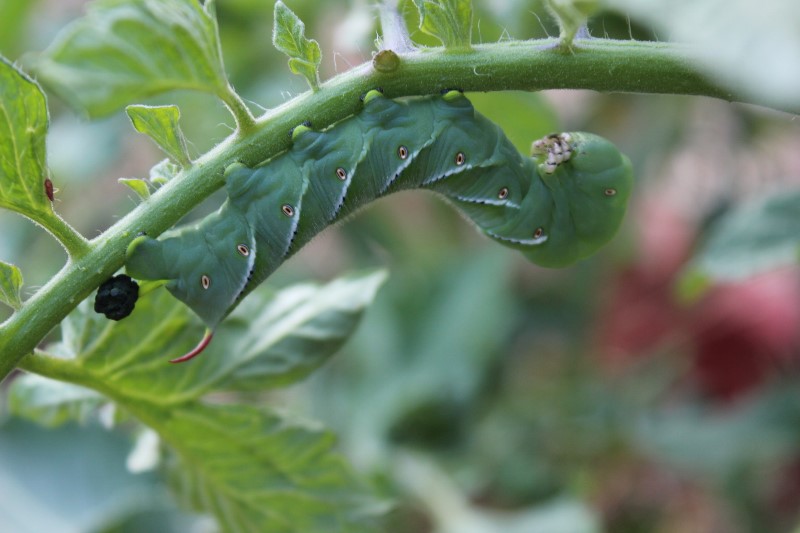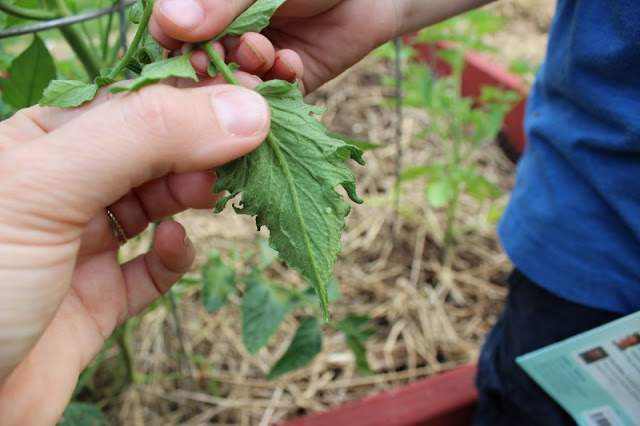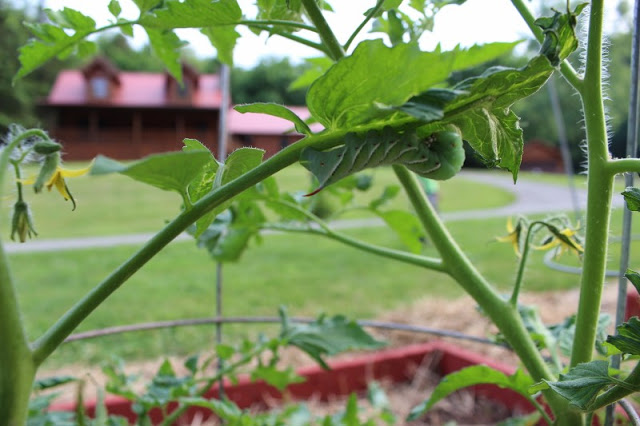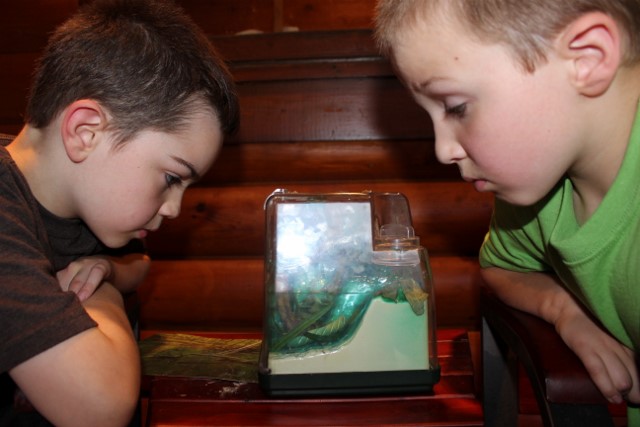The main character: the Tobacco Hornworm
He’s a confused kind of guy. He keeps eating the tomato plants, probably from a lack of other options in our garden… (Note: We have a tobacco barn, but that’s just for looks. It’s really just a giant doghouse. But the dogs don’t even use it.)
That black ball behind him? Ummm… you don’t even want to know what that is! The crazy red spike on his backside struck fear into my heart, but the boys have proven that these things are harmless. Still, it makes me squeamish just looking at the thing.
This huge, four-inch caterpillar started out as a little bitty egg from a hawkmoth or sphinx moth. (They’re not very attractive, either.) Can you believe a caterpillar the size of my thumb started out as a teeny weeny egg?
After five instars, the hornworm becomes… really, really big.
We actually found about seven of these things on our poor tomato plants.
Enter: Stephen, David and Levi
So… we decided to do what all nature-study-loving families do when they find fascinating creatures to observe. We kept them as pets…
that is until we accidentally killed them. We were fresh out of Tobacco around here (ha!), and I wasn’t about to feed them our tomato plants! We tried feeding them grass and weeds. Ummm… didn’t work so well.
So, we were hornworm free for a little while, and then:
What in the world is THAT!??
Here’s where the plot thickens:
Enter: the Braconid wasp
This caterpillar is still capable of movement but is already a goner. The white rice-looking thingies are the cocoons of a parasitic wasp. These tiny wasps feed on the caterpillar while in the larval stage and then burrow out to make their own cocoons. (Is your skin crawling yet?) In a few days these wasps which usually go unnoticed by man will continue their job at pest control.
So… the best, most natural defense against hornworms?
Mother nature. We just let this caterpillar be, and the new miniature wasps will take care of the rest…
…but if not, we can always do another nature study. That should take care of them once and for all.
Interesting facts
- Mature larvae drop from the plant to pupate under ground.
- The Latin name Manduca means “glutton” or “to devour.” Yes, after the number they did on our tomato plants, I would have to say they are appropriately named.
This one’s dedicated to my husband Gary because he loves it when we find really weird stuff on our farm.






